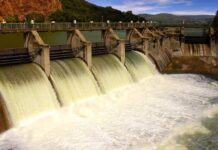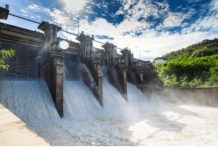The Turkish Government signed a deal with the Russian Government in May 2010 to construct four 1,200MWe VVER units totalling 4,800MWe. The Intergovernmental Agreement on Cooperation of the NPP was ratified by the governments of Turkey and Russia in 2010.
The first unit is expected to achieve its first criticality in the second half of 2018. The remaining three units will come online in yearly intervals once Unit 1 is put for commercial operations in 2019.
The nuclear plant will be built, owned and operated by a Russian subsidiary of Rosatom, a state-owned nuclear company. In December 2010, Rosatom created a project company named Akkuyu Electricity Generation JSC (joint stock company). JSC Atomstroyexport, JSC Concern Rosenergoatom, Atomenergoremont and Atomtekhenergo and JSC Inter Rao Ees are the founders of the new company. Foreign investors are allowed to invest up to 49% in the new company.
The estimated cost of the project is $20bn and would be Turkey’s first nuclear power plant. On-site work has already been started and the first concrete is planned for late 2013.
The Akkuyu site has sea communications to bring in heavy machinery. It is close to centres of electricity consumption such as Adana, Konya, Antalya and Mersin. There is also a relatively low population density in the region.
Akkuyu nuclear power plant history
“Delayed in 1999 and cancelled in 2000, the project was originally intended to produce 3,000MW.”
The bidding for the plant was originally announced on 13 December 1996. Bids were received by October 1997. The contract was supposed to have been awarded in October 1999, but the deadline was extended to 31 December 1999 and the project was eventually cancelled in July 2000.
These are the latest stages in a long history. The plant was first suggested in the 1970s, and bids were invited in 1977. However, the project fell through for financial reasons. Originally the second round of bidding was for a turnkey project, but this was changed to a build operate transfer (BOT).
Discussions with a Canadian consortium led by AECL fell through partly for financial reasons, and partly because the Chernobyl accident threw uncertainty over the whole project. In the mid 1990s, the project was resumed, creating the present round of bidding.
Two bids for the 3,000MW plant were originally requested. The first (main) option had to have a maximum net output of 1,400 (+5%) MW (with one or two units according to the size offered). The second option was to have a maximum net output of 2,800 (+5%) MW (two or four units according to the size offered). The plant could be PWR, BWR or PHWR. The minimum unit size was 600MW, and the minimum plant size was 800MW.
The accepted bidder had to meet several criteria, such as five years’ experience with this type of power plant, licensed to operate in the country, experience of constructing and commissioning at least two nuclear plants previously, designation of a reference plant similar to Akkuyu and designs must not have had a previous accident.
Turnkey basis
The bid was to be for a nuclear power plant on a turnkey basis. This was to comprise a nuclear and turbine island, fuel storage system (with 20 years spent fuel capacity), coolant water intake and outlet structures and GIS Substation of 154kV and 380kV. In addition, the successful bidder had to supply two years fuel (during the warranty period), with an option to supply fuel for a total of seven years.
The bidder would supply spare parts and supervise the plant for the two year warranty period, and (optionally) for three years thereafter. The bidder would train the plant staff and construct the ancillary facilities.
Bids were submitted by three consortia: Atomic Energy of Canada, in partnership with Turkish firms Guris and Gama Bayinder, Westinghouse-Mitsubishi, in partnership with Turkish firms MNG and Enka, NPI (Fromatone and Siemens), in partnership with Turkish firms Simko, Garanti Koza, STFA and Telefon.
Turkish nuclear power facility site
Largely because of nuclear’s high ‘hidden’ costs and waste disposal problems, environmental groups tend to oppose all nuclear projects. In the case of Turkey, the area is also prone to earthquakes, with a 6.2 richter earthquake having hit Adana, 180km from the plant site.
“The nuclear plant will be built, owned and operated by a Russian subsidiary of Rosatom, a state-owned nuclear company.”
While the plant is being designed to withstand earthquakes of up to 6.5 on the richter scale, the possibility of a stronger quake has caused concerns.
A second reason for resistance in western countries is the possibility of nuclear weapons. Civil power plants can produce plutonium for military uses. The volatility of internal Turkish politics, and the country’s chequered history with some of its neighbours, has made this another matter for concern.
In 2006, the Turkish government said it again planned to build nuclear power plants. The Turkish Parliament in May 2007 passed a law covering nuclear power plants, including construction, electricity sale, waste management and decommissioning.
State generation company Elektrik Uretim AS (EUAS) will be providing the site required for the four reactors.
Turkish Electricity Trade and Contract Corporation (TETAS) has guaranteed the purchase of 70% power generated from the first two units and 30% from the third and fourth units over a 15-year power purchase agreement. Electricity will be purchased at a price of 12.35 US cents per kWh and the remaining power will be sold in the open market by the producer.
The first reactor is expected to start within seven years of the receipt of licence and the others will become operational at yearly intervals thereafter.












































